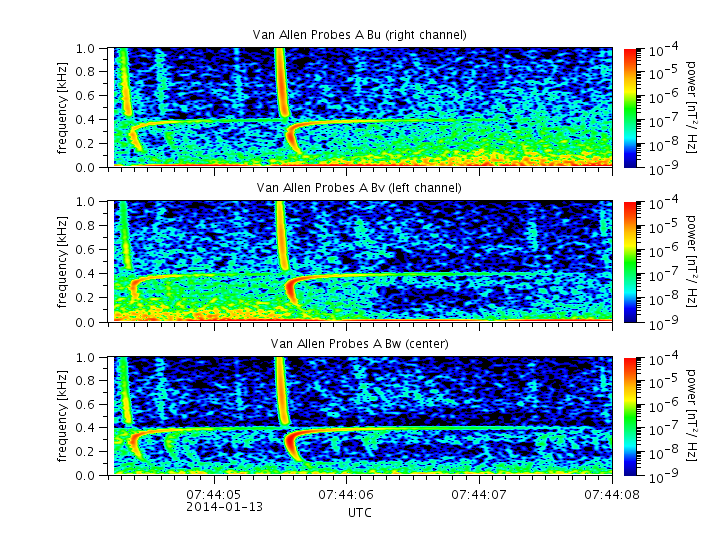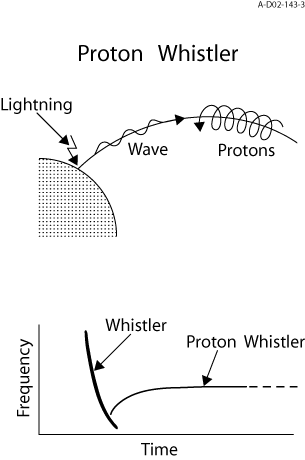Van Allen Probes EMFISIS Waves
Proton Whistlers 2014-01-13

|
|
|
|
AVI animation with moving cursor |
|
These signals were recorded by the Van Allen Probes A spacecraft EMFISIS Waves instrument on 2014-01-13 during hour 07 UTC. The measurements of three orthogonal magnetic antennas Bu, Bv, and Bw were combined to make this 4-second stereo audio recording. The video presents a frequency-time spectrogram for the three antennas, with a moving cursor that shows the time position of the audio track. Time advances from left to right along the horizontal axis, frequency ranges from low to high frequencies along the vertical axes, and the amplitude of the signals is color coded with blue indicating weak signals and red indicating strong signals. A proton whistler can only be detected in spacecraft measurements above Earth's ionosphere. The proton whistler will occur immediately after an upward-propagating whistler has been generated by a lightning discharge. It is distinct from the more common, lightning-generated whistler both in tone and spectral characteristics. Unlike the lightning-generated whistler, the proton whistler consists of a long, slowly rising tone that begins at a low frequency and levels off in a monotone at a frequency just below the proton cyclotron frequency, a characteristic frequency of the ambient plasma. The tone will typically last a second or more. |

|